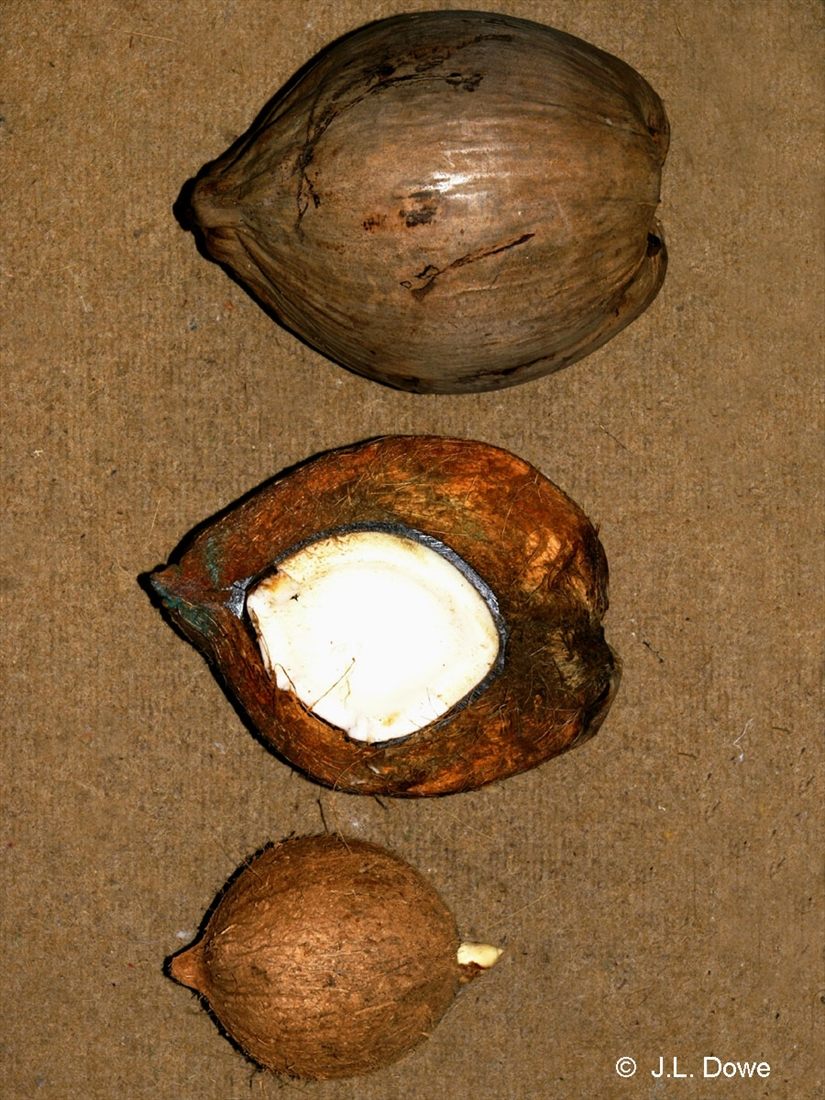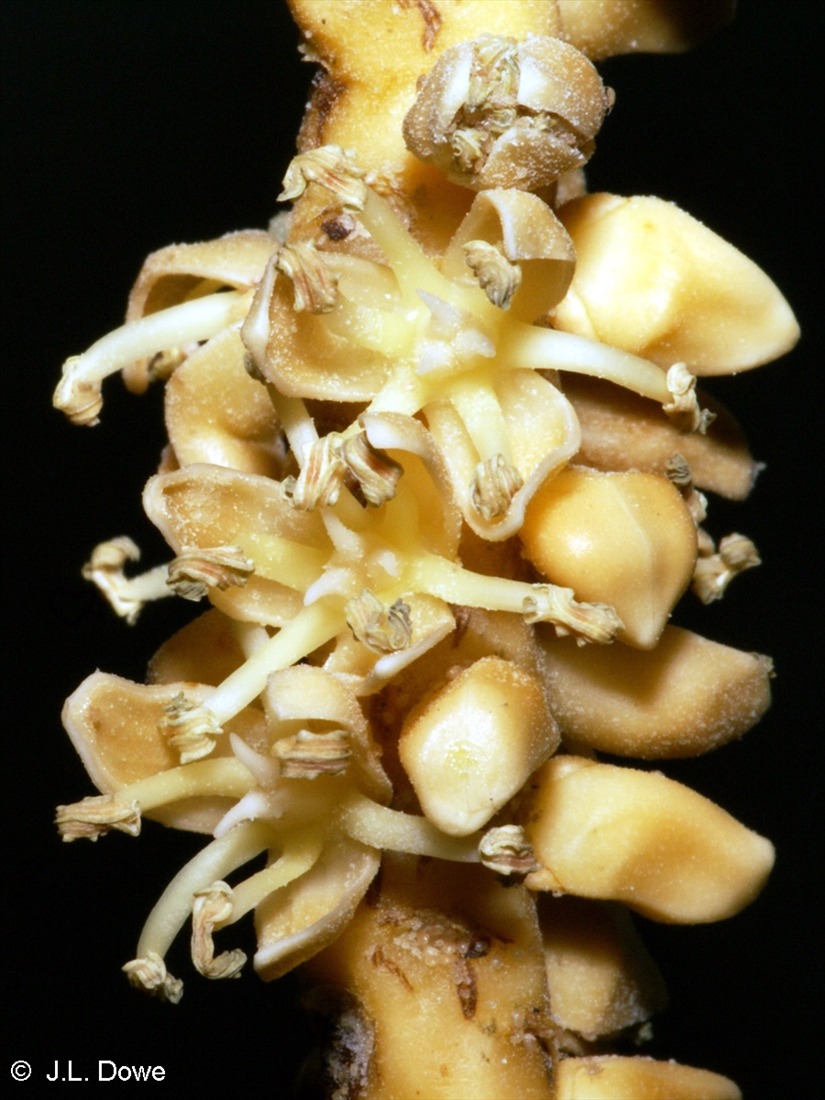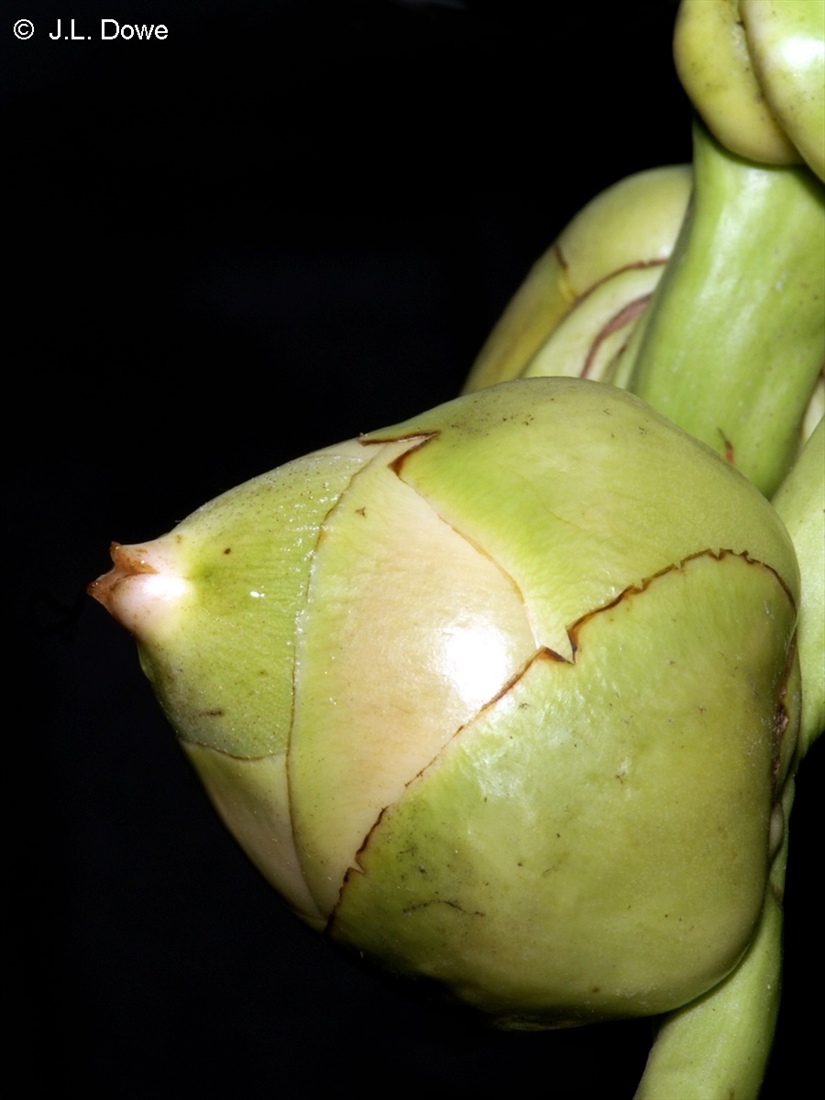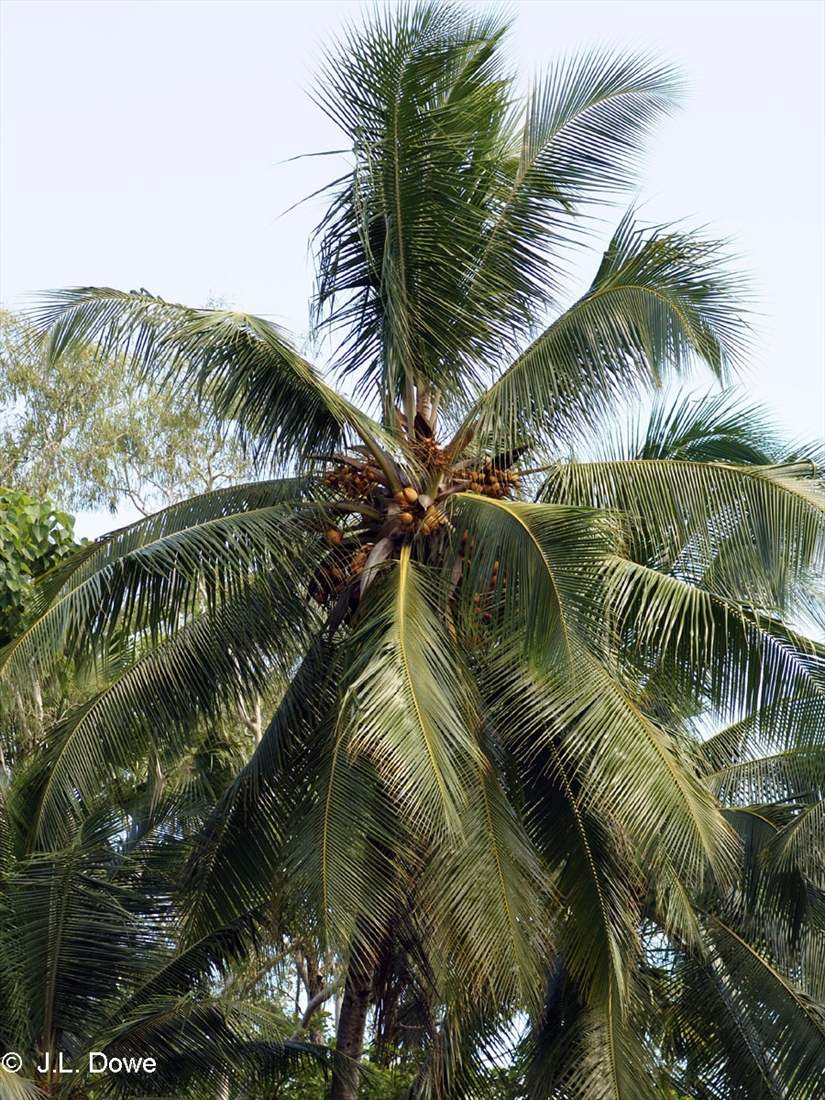Australian Tropical Rainforest Plants - Online edition
Cocos nucifera L.





Linnaeus, C. (1753) Species Plantarum Edn. 1 2: 1188. Type: India.
Coconut
Single stemmed palm with the stem 10-45 m tall, commonly leaning and with a swollen base surrounded by a mass of roots
Leaves peripinnate (even-pinnate) with 200-250 linear-lanceolate leaflets arranged in a single plane on either side of the rachis. Fronds are 4.5-5.5 m long, with the petiole making up a quarter of its length. Leaflets are 1.5-5 x 50-150 cm long, acute, and minutely scaly beneath. Petiole 1-1.3 m long; the expanded base of the petiole provides firm attachment for the frond to the stem. The petiole and rachis may be green or bronze, which is indicative of the fruit color.
Inflorescence panicle-like. The 70-100 cm long woody spathe splits lengthwise to expose the spadix. Each spadix consists of a main axis 1-1.5 m long with 40-60 branches or spikelets bearing the flowers. Each spikelet carries three female flowers at its base and several hundred male flowers above. The male flower has six perianth segments 10-13 mm long and yellow surrounding six stamens. The larger female flowers are solitary, globose, petals 20-25 mm long, resembling the sepals.
The fruit is a fibrous drupe 20-35 cm long, obtusely 3-angled and varies in shape from elongated to almost spherical and weigh between 850 and 3700 g when mature. Only one carpel develops into the seed, the other two aborting. The perianth persists at the base of the mature fruit. The seed consists of, a thin hard skin (exocarp), a thicker layer of fibrous mesocarp (husk), the hard endocarp (shell), the white endosperm (kernel), and a large cavity filled with liquid.
Features not available.
Occurs in WA, NT, CYP, NEQ and CEQ. Putative wild populations occur on Cape York Peninsula and Torres Strait, widely cultivated in other tropical areas of northern Australia. Altitudinal range for naturally spreading plants from sea level to 30 m. Occasionally grows in vine forest but mostly in strand vegetation.
The Coconut Palm is one of the 10 most useful trees in the world and cultivated as a tree crop throughout the subtropics and tropics of the world (Du Puy & Telford 1993).
Used for timber, posts, fencing, food, fuel, drinks, thatching, basket making, mats, brushes, brooms, utensils, medicine, alcohol and oils.





